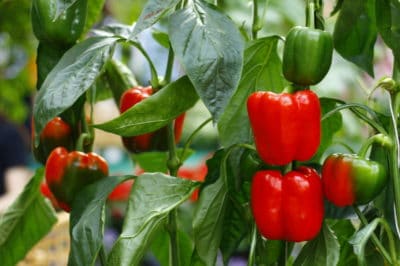Standard Bell Pepper
A standard size bell pepper fruit is approximately three by four inches in size but will vary between fruits and plants. Examples of standard size bells include:
- California Wonder
- Gold Standard Yellow
- Yankee Bell
The number of fruits each plant produces is highly dependent on the conditions of the plant. Plants exposed to stress from temperature, inconsistent watering, pest damage, or disease will not produce as many peppers. On average, standard bells produce 6-8 peppers per plant.
Miniature Bells
Bell peppers of every color are available in medium and miniature versions. These sweet and crunchy baby bells are every bit as delicious and nutritious as their larger siblings. Since they are miniature, each plant produces more fruits.
Medium sized bell peppers have fruits that are about three by three inches in size. Size reflects the number of fruits produced, so medium bell peppers may grow between 10 and 15 fruits.
Miniature bell pepper fruits are about two by two inches in size. These are bite-sized bells. Plants can be very productive pumping out dozens of small fruits.
Encouraging More Production
Healthy plants grow lots of healthy fruit. Encourage your plants to produce more by keeping them healthy. Two key factors in growing healthy peppers are water and temperature. Water consistently and frequently, drip irrigation on a timer is the best option.
Give pepper plants two inches of water per week and adjust for natural precipitation. Do not let the soil dry out completely, but also do not keep it wet. A dampness is what you trying to achieve.
Keep pepper plants between 65-80°F (18-26°C) for best results. If your climate does not allow for this type of dependability, consider growing peppers in a greenhouse or polytunnel.
Sometimes pepper plants do not produce the amount of fruit we expect. Investigate and figure out a solution to this problem. Many gardeners find that hand pollinating their peppers can vastly improve yield.
Pepper flowers are typically self-pollinating, but occasionally it takes a slight jostle from wind or an insect to knock the pollen from the stamen to the pistil. Plants grown indoors are particularly susceptible to low pollination.
Inspect your plants for signs of yellowing, leaf curling, slow or stopped growth, blossoms dropping but no fruit, or wilting. These are signs of stress, deficiency, or disease.
